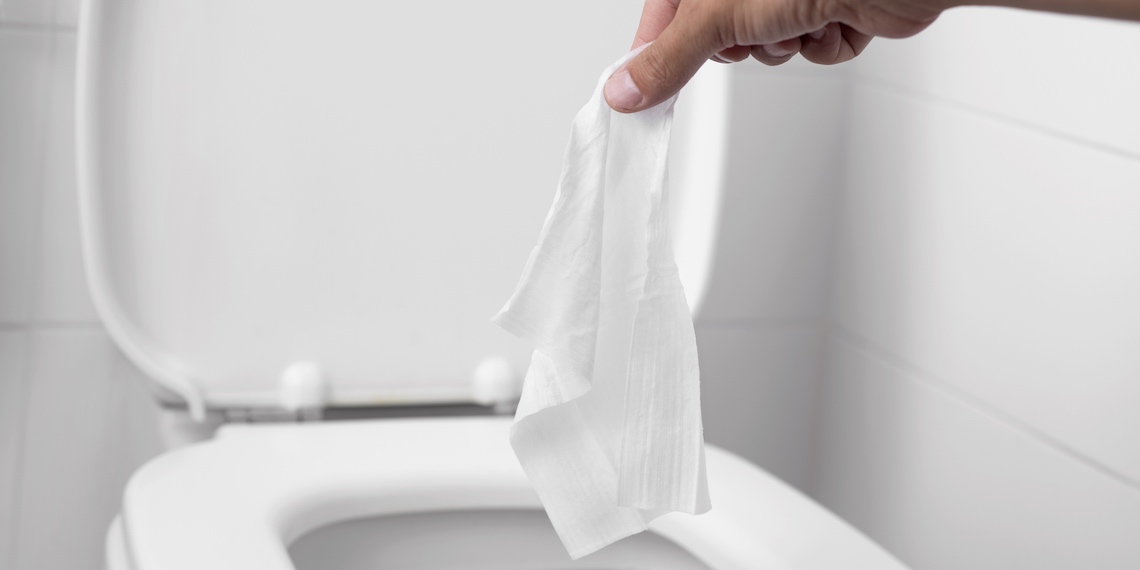World-first flushable standard set to curb cost of sewer blockages

The Australian water community has hailed the release of a world-first "flushable" labelling standard, with the much-needed protocol set to help curb the costly burden of sewer blockages around the country.
On 23 May, Standards Australia released DR AS/NZS 5328 Flushable Products. The new standard outlines the criteria for materials suitable for flushing down the toilet in Australia and New Zealand, and provides requirements to manufacturers for correct and informative labelling.
Despite many wet wipe products being advertised as "flushable", water utilities spend hundreds of thousands of dollars every year mitigating blockages caused by these products.
The infamous scourge of wet wipes impacts the health of assets and the reliability of sewer systems, and has instigated many community awareness initiatives, such as Icon Water’s "Free the poo" and Sydney Water’s "Are you flushing kidding me?" campaigns.
The new standard requires products with the flushable symbol to pass six tests to ensure they are suitable for the sewers, including being able to readily break into pieces smaller than 2.45 cm after one hour.
Manufacturers will also need to attest that the product does not contain any plastic, and are expected to start using the flushable symbol in the coming months for products that pass the testing criteria.
SA Water Customers and Commercial General Manager Anna Jackson said the standard is a significant step towards reducing the costs and environmental impacts caused by unflushables.
“We, like our fellow water utilities across Australia and the globe, continue to see wet wipes regularly flushed down into the sewer network, and it costs us hundreds of thousands of dollars each year to remove these unflushables from our pipes and treatment plants,” she said.
“This is not just an Australian issue either, with estimates suggesting UK water utilities spend up to $170 million each year clearing blockages and preventing solidified masses of fats and oils, known as ‘fatbergs’.”
TasWater Service Delivery General Manager David Hughes-Owen said there has been a clear appetite for improving outcomes in regards to mitigating the unflushables issue, and that the new standard is crucial.
“We cannot overstate how important the implementation of this standard is to our service delivery operations and to the future health of our sewerage infrastructure,” he said.
““Flushing these items risks blocking both the household pipes as well as TasWater’s sewerage system and they remain a problem right up until we have to sift them out when they reach the sewage treatment plant.
“Although participation in the standard is voluntary, what is encouraging is that it was developed through committed collaboration between manufacturers, water utilities and peak bodies.”
Working together
Water Services Association of Australia Executive Director Adam Lovell said the release of the Australian and New Zealand standard is the result of continued effort, collaboration and commitment that the Australian water community should be proud of.
“It is exciting to see the release of this Australian and New Zealand Standard which has been many years in the making,” he said.
“We congratulate the urban water industry, manufacturers, suppliers and consumer interest groups for their commitment and contributions to developing this important standard, which is already receiving attention with other countries expressing interest in adopting it.
“One of the first of its kind internationally, it is the result of ground-breaking collaboration between manufacturers, water utilities, peak bodies and consumer groups.”
Lovell said other international water utilities have been watching the development of the standard closely.
“There is already interest in adopting the standard, with Israel advising it intends to adopt the standard with no changes,” he said.
“Clear specifications for manufacturers and clearer labelling for customers will help reduce what has become a major concern for the urban water industry, with increasing pipe blockages and extra costs for water utilities and customers due to inappropriate material being flushed down the toilet.”
Research for change
Urban Utilities held a series of trials at Australia’s largest replica sewer, located at its Innovation Centre in Brisbane, to help develop the tests that wipes need to pass to achieve the national standard.
Urban Utilities spokesperson Anna Hartley said the Queensland utility removes around 120 tonnes of wipes — the weight of 34 hippos — from its wastewater network every year, and is very pleased with the outcome.
“We ran extensive trials in Australia’s largest replica sewer at our Luggage Point Innovation Centre to monitor how wet wipes would break down in real life sewer conditions to help develop the new standard,” Hartley said,
“The standard outlines clear testing criteria manufacturers need to meet to carry the new label which covers the ‘flushability’ of a wide range of disposable products, including tampons, paper towels, and even kitty litter."
Hartley said the new standard is the first time that utilities and product manufacturers have come together to define a clear and mutually accepted pass–fail criteria of what can and can’t be flushed.
“It’s a real game-changer that will help consumers better understand how they can protect their private plumbing and our underground network,” she said.

